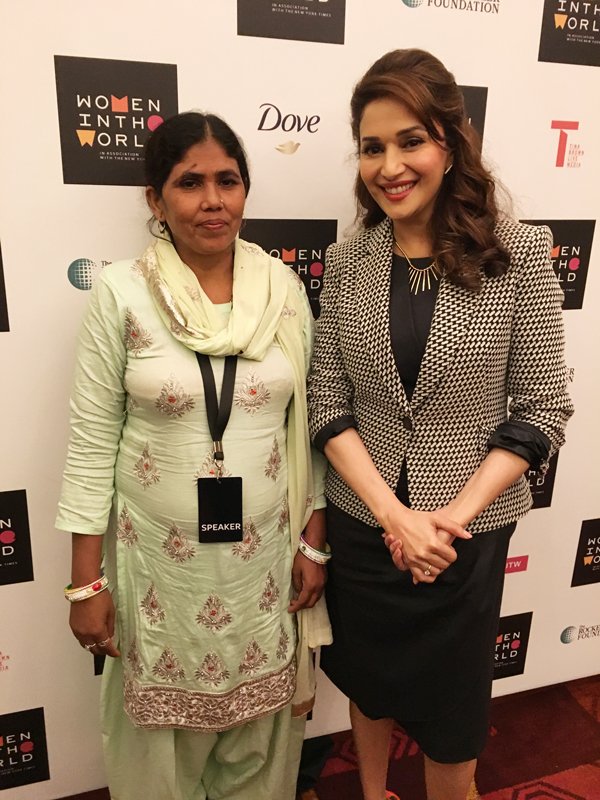
From No Electricity To Solar Entrepreneur: How Solar Power Changed Kismet Jehan's Life
27 Nov 2015 3:49 PM GMT
Reported By Lamat R Hasan @LamatAyub | Originally published on catchnews
Imagine having to live in a nondescript village with no electricity. Imagine having to skip dinner for fear of having to step out in the dark to defecate. Imagine having to walk half a kilometre to charge your phone so you can reach someone in an emergency. That was the life Kismet Jehan lived till a few months ago. Most of us have become inured to what’s happening in the remote parts of this country – except this isn’t one of those.
This is just 600 km from Delhi and a mere 160 km from Lucknow. Like other women in Katiya village of Bahraich district in UP, Kismet would have continued to skip dinner and walk the extra mile, quite literally, and pay Rs 5 to get her phone charged – but for a solar power project that lit up her life.
Access to solar power has, in real, changed her kismet – she has launched a brand of snack called ‘Dhamaka Namkeen’; doesn’t have to skip dinner; or live in perpetual anxiety about charging the phone to speak to her husband who lives in Mumbai. Most recently, Kismet was a guest on a panel to discuss social development being fuelled by solar power at the Women in the World event in Delhi.
“Close your eyes. That is how dark my village was till last April,” says Kismet, now a community organiser and a solar power proponent in her village.
Smart power
Around 1.3 billion people across the world have no access to electricity. Of them, 300 million are in India. In April 2015, Rockefeller Foundation launched its Smart Power India project, zeroing in on Bihar and Uttar Pradesh where there is a higher percentage of people with limited or no access to electricity.
“Even though the government has invested in connecting rural areas with the national power system, supply in rural areas is often inaccessible, inadequate, erratic and unreliable,” says Deepali Khanna, senior associate director at the Foundation.
To support the Indian government’s 24×7 power supply plan, the foundation chose communities where less than 10 percent had reliable access to power from the national grid.
Unlocking development
Under the Smart Power model an anchor tenant, for example a telecom company operating mobile towers, serves as the base demand for power, making it profitable for an Energy Service Company (ESCO) to build a power plant in the area.
“With this structure in place, the ESCO is able to sell power, benefiting homes and businesses,” says Khanna.
The strength of the model, for her, is that it can easily fuse with the government’s future grid plans.
Also, as it is driven by the market, it is both scalable and sustainable and can unlock economic development opportunities for the rural poor.
For the foundation though, electricity – however critical – isn’t the end in itself, it’s a means to an end. And that end is to empower women to go out and live safer, more independent, more economically self-sufficient lives.
Witnessing change
Because for most women outside our cities, it’s still very, very hard. Freedom and safety, such as it is, ends with sunset. Electricity makes an immediate impact on this front.
Kismet is firsthand proof. Access to reliable energy from mini-grids has helped her set up a business that she hopes to expand. “If I do well, my husband Ameen Khan would leave work in Mumbai and join me here,” says Kismet.
Already, her three daughters can study late into the night, brightening up their future.
Lighting up homes is obviously not enough though. The project has to be linked with economic opportunity.
“This aspect of the model is key because it is increased economic opportunity that can help achieve a more inclusive and thriving India,” says Khanna.
Going by its success the project may be replicated in other states.As of now, there are 65 operational sites with 5,000 customers. Of these,1,000 are local businesses. Khanna hopes to reach 1,000 villages in three years – providing power to a million Indians.
“We aim to have 100 plants by the end of this year,” she says.
While the foundation’s aim is to encourage entrepreneurship among women, other organisations are using solar power to change social equations.
Sanchaita Gajapati Raju’s SANA (Social Awareness, Newer Alternatives) uses alternative energy to provide clean drinking water – and to break the caste barrier. “It is a long battle. It won’t happen overnight,” says Raju, also a panelist at WITW.

For Development Alternatives, led by Ashoke Khosla, Development Alternatives, providing affordable power via micro grids to villages is a core focus. “Electricity is a human right. And to provide it, we have to make it commercially viable,” says Khosla.
All three organisations are showing it can be done, and when villages are lit up the transformation is more than physical, it changes their very direction for the future.
Read more at Catchnews.com
 All section
All section













